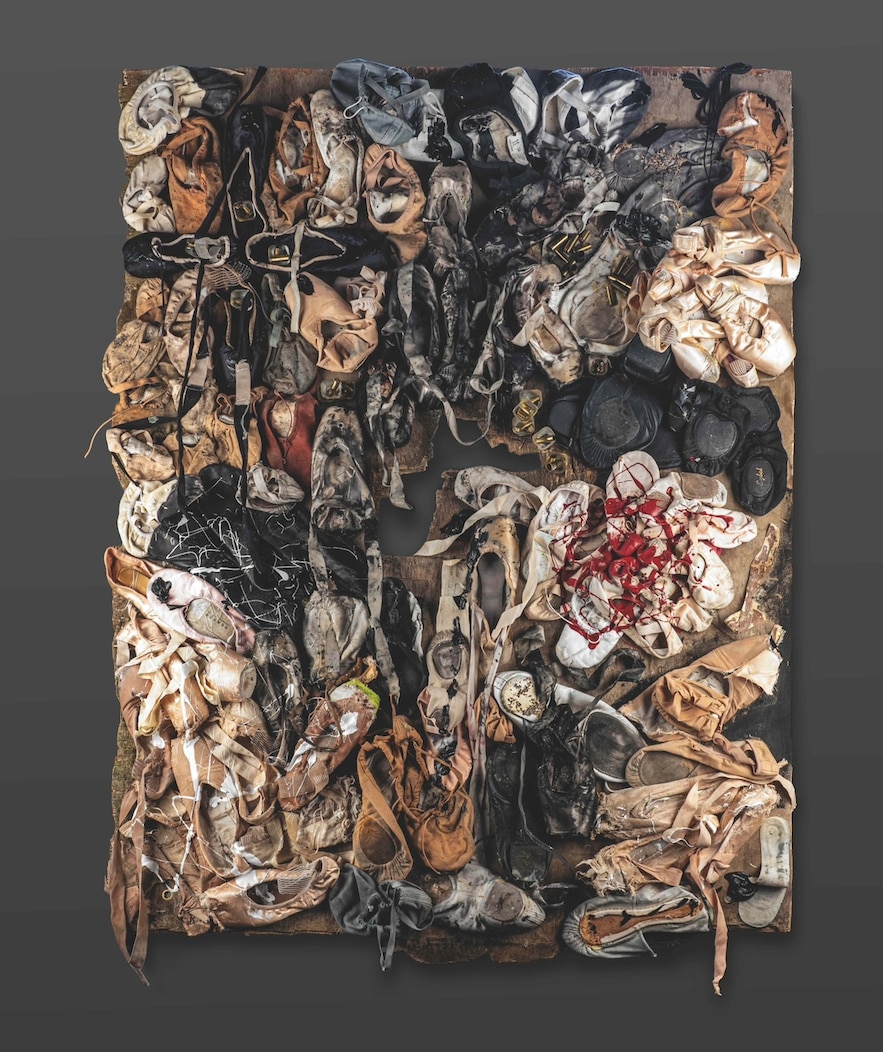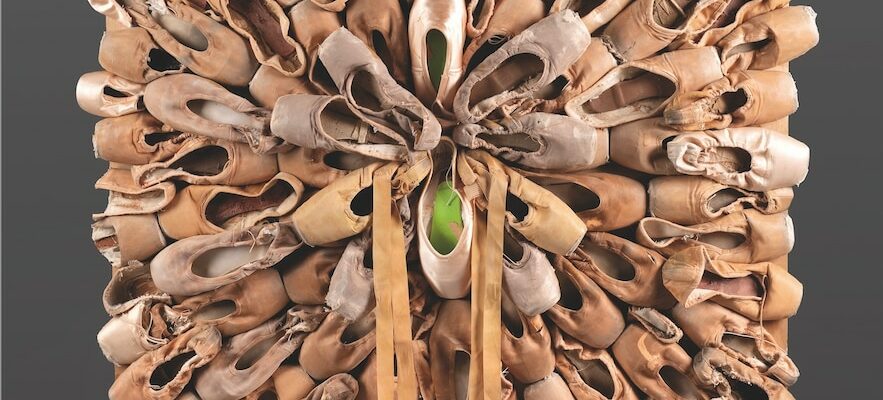Jean-Charles Gil had a hard time reaching the heights of his art… “My feet weren’t predisposed to dance but it was unimaginable to give up,” he says today, after more than twenty years spent treading the greatest international stages and almost as many as a choreographer at the head of the Ballet d’Europe founded at the dawn of the 21st century. He started out with Roland Petit, who named him a principal dancer in 1979, then went on world tours as a “guest” from the National Ballet of Canada to the Béjart Ballet of Lausanne with the unforgettable Rite of Springpassing through the Met in New York, La Scala in Milan or the Paris Opera which offered him the title role in Romeo and Juliet in the mid-1980s, and finally the final star-studded stage within the Ballets de Monte-Carlo.
Whether he danced for others or made others dance, this story of feet never left him. A powerful bond woven with his demi-pointes, nourished by sweat, torments, and joy too. These slippers, which are for a dancer a sort of second skin, a witness to doubts and triumphs, a long-term accomplice sometimes transformed into a scapegoat, are now at the heart of the plastic creation of Jean-Charles Gil, 64 years old today. He recycles them, assembles them into compositions, halfway between installation and sculpture.
“Irradiance / Mandala”, 2018.
/ © Jean-Charles Gil © Photo Christine Durand
Even though he has only been devoting himself entirely to this new form of expression for five years, the former dancer-choreographer has matured it for a long time. In 1998, as an outlet that would lead him two decades later to become a visual artist in his own right, he had already developed a first work based on the career of the ballerina Paola Cantalupo, from her slippers worn as a little girl to the pointe shoes worn by the star dancer of the Ballets de Monte-Carlo. Then, once the adventure of the Ballet d’Europe was behind him, Jean-Charles Gil was able to give free rein to this creative impulse. On tiptoe, the man remains discreet, working sheltered from the noise of the world in his agricultural estate on the banks of the Durance.
Not far from here, Silvacane Abbeya Cistercian jewel of Provence, is hosting around twenty of his works this summer (until September 8), including a sculpture created especially for the site, Inclusionwhich sits under the vaults of the refectory. A 60-kilo piece made of slippers compressed into bales by a recycling plant that the artist cut into the side “to free some of its mass from this material ready to be thrown away.”

“Mariupol”, 2022.
/ © Jean-Charles Gil © Photo Benoît Gaillandre
Exhumed from company reserves, worn or new, with or without ribbons, arranged in a row of onions, deployed in a mandala or accumulated pell-mell, the slippers, transfigured by these assemblages renewed each time, “all carry existence and experience”, underlines the artist. But exit the outlet of the 1998 stammering; from now on, he claims “a voluntary approach of observation, memory and aesthetic research” around a material that has accompanied him throughout his life as a dancer. These personal stories are also sometimes part of the great, like Mariupolmade after the bombing of the Ukrainian theater by the Russian army in March 2022. During the development of this piece crossed by a jet of red paint, Jean-Charles Gil even brought in soldiers to shoot real bullets at the children’s slippers that compose it. Symbol of desire and suffering leading to grace, the object is here nothing more than pure distress.
